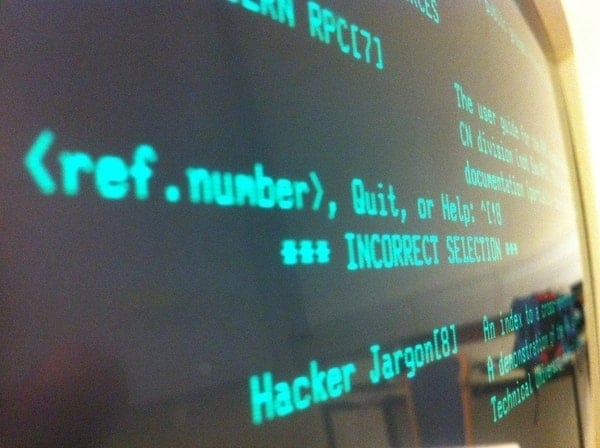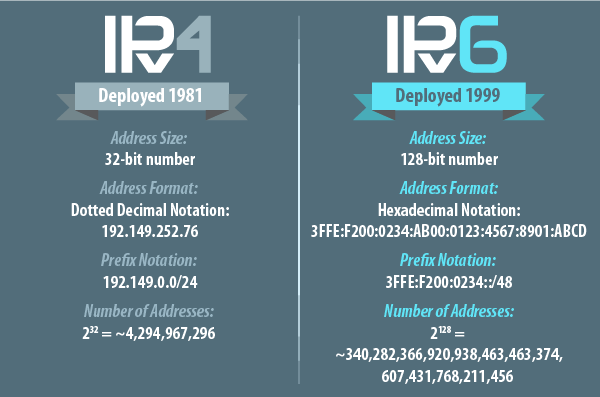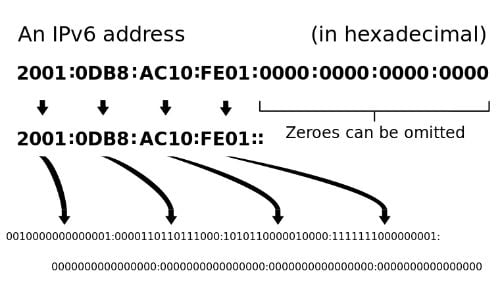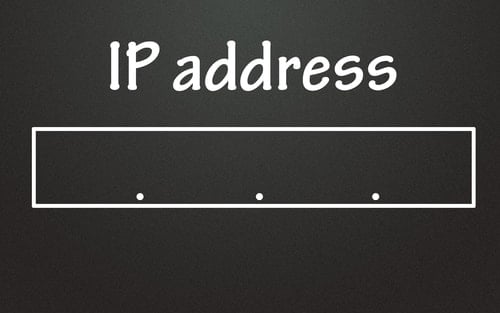
Show You Care: Observe and Listen to Others
October 5, 2015
This Week in Getting Hacked: Hollywood’s Hacking Edition
October 7, 2015Last week we went over some of the jargon in the IP world so that you, the reader, would have a better understanding of these things should you have to troubleshoot your in-home or business network.
It was a bit dry, but it’s a useful resource nonetheless.
This week we’re sticking with the dryness, but turning up the knowledge. Here’s part 2 of how to figure out all that IP nonsense (you can read part 1 here).
What Is an Internet Protocol (IP) Address?
Internet Protocol, or IP, is an internet protocol network used by private and public networks to facilitate communication between devices within the network.
All types of network, from the World Wide Web to small private network, depend on assigned IP addresses to dictate where information goes. An IP address is set of unique 8-bit numbers assigned to a device that connect to a network. In other words, your IP address is like your home address but for internet-capable devices. Instead of “mailing” a letter, you’re “mailing” information.
There are two types of IP addressing standards, IPv4 and IPv6. IPv4 is the most widely used and familiar type of IP address, but with IPv4 address space running out, IPv6 is in line to replace it in the future.

What Is the Border Gateway Protocol?
The Border Gateway Protocol (BGP) is defined by Cisco as “an inter-autonomous system routing protocol.” In layman’s words, the BGP exchanges local routing information between different Internet Service Providers (ISPs)—for example: Comcast and Time Warner.
- You’re on your computer and you want to watch some Netflix
- You type in netflix.com into your browser’s search bar
- It looks up the address for Netflix
- It then pushes the address to your router which goes and finds Netflix
- Your router sends the request to the next router which checks the routing tables (mentioned above)
- Through the tables it sees that Netflix is over there, and you can go out this router here to get there
- Your request follows that route and hits the next router on another network
- This new router agrees that Netflix is “over there” and says that you need to go to that router at Netflix’s data center
- Netflix’s router gets you to their servers and they send the information you requested back to you in much the same manner.
- Bonus: if one of those routers is down / flooded the tables will show your request an alternate route to get there.
We mentioned above about IPv4 and IPv6, but let’s get into a little more detail here:
What is IPv4?
IPv4 addresses have 4 bytes (32 bits) whereas IPv6 has 16 bytes (128 bits) in length. These bytes are typically called octets and for the sake of readability, these bytes, bits, and octets are written in what’s called dotted decimal. Dotted decimal separates each octet of the IP address with a decimal point.
For example, a typical IP address (IPv4) seen by a computer in binary notation is:
11000000.10101000.00000001.00000000
That translates into dotted decimal as:
192.168.1.0
As you can see, dotted decimal notation is much easier on the eyes and it’s what you’ll typically see when dealing with IP addresses through your Internet Service Provider (ISP).
What Are IPv4 Address Classes?
IP addresses (using the IPv4 standard) are divided into 5 classes:
- Class A
- Class B
- Class C
- Class D
- Class E
They are defined as such:
| Class | Starting Address | Ending Address |
| A | 0.0.0.0 | 127.255.255.255 |
| B | 128.0.0.0 | 191.255.255.255 |
| C | 192.0.0.0 | 223.255.255.255 |
| D | 224.0.0.0 | 239.255.255.255 |
| E | 240.0.0.0 | 255.255.255.255 |
Each IP class has a purpose in the world and are assigned to the internet as such:
| Class | Purpose |
| A | These are designed to be used in very large companies like Google. |
| B | These are designed to be used in medium-sized companies |
| C | They designed to be used in small-sized companies. |
| D | They are not used in the public sector, instead being reserved for multicast addressing |
| E | They are also not used in the public sector, instead being reserved for scientific studies. |
Who Is ARIN?
During the beginning stages of the internet, developers created a series of numbers, Internet Protocol version 4 (IPv4), to effectively and efficiently network between computers.
A few years later the Internet Assigned Numbers Authority (IANA), now a department of Internet Corporation for Assigned Names and Numbers (ICANN), was created to help manage IPv4 IP addresses. As the internet continued to grow so did the need for IPs and organizations to manage their distribution. From the 1980s through the 2000s, a number of organizations were created to do just that.
In 1997, the American Registry for Internet Numbers (ARIN), one of five Regional Internet Registries (RIRs), was created as a nonprofit to issue Internet number resources in its region that today includes parts of the Caribbean, Canada, and the US. ARIN was also created to facilitate consensus-based policies and even promote the advancement of the Internet through education and outreach (ARIN, 2013). Today we rely on ARIN to implement the policies developed through open and ongoing community input. In other words, ARIN is the organization with the authority to carry-out the policies we created around Internet numbers – whatever they say, goes!
In fact, ARIN just announced that they are completely out of IPv4 — you can only get them through re-sellers or entities who are hoarding them. But the world is moving onto the world of IPv6, and we should run out of them any time soon….
IPv6 (internet protocol version 6) is a revised protocol for the ID systems used to differentiate computers on a network routing traffic across the Internet. Every computer that communicates over the Internet must carry its own address. Up until 2013, IPv4 had been used, however the world’s supply of IPv4 addresses have been depleted; IPv6 succeeds IPv4 web addresses.
Understanding IPv6: How Do IPv4 and IPv6 Communicate?
Over the Internet, Data is transferred via network packets; however, this is where IPv4 and IPv6 diverge. IPv6 requires a different format in order to transfer network packets.
Unfortunately, IPv4 and IPv6 addresses cannot transmit data to each other directly; they require another gateway to communicate.
Fortunately, IPv6 addresses can efficiency route data across the Internet due in part to the increase of subnets or decimal place-holders representing numerical values.
A situation where an IPv4 device would have to communicate to an IPv6 device would be rare, but only possible through the means of a 3rd party proxy, otherwise it would be impossible. Most websites, however are accessible through either IPv4 or IPv6 (since IPv6 is so voluminous, there’s really no problem in giving devices and websites both).
What Are the IPv6 Advantages
- Increased Capacity: of address space—resources are efficiently allocated to accommodate additional web addresses.
- Efficient Routing: allows for easy aggregation of prefixes assigned to IP networks.
- Efficient Data Flow: enables large data packets to be sent simultaneously helping to conserve bandwidth.
- Security: is improved due in part to improved authentication methods built into network firewalls.
What Are the Disadvantages of IPv6?
- Conversion: IPv4 is still widely used and the world is slow to convert to IPv6.
- Communication: IPv4 and IPv6 machines cannot communicate directly to each other, in the very rare circumstance that they would need to.
- Transition: The process of making the switch to IPv6 from IPv4 is slow and tedious.
- Readability: Understanding IPv6 subnetting can be difficult on its own, let alone trying to remember/memorize your IPv6 address.
Who Is Making the Switch to IPv6 Address Format?
In 2013, many Internet companies, such as Google, Amazon and Yahoo, temporarily switched to using IPv6 network protocols simply to test the waters. The test proved to be a success for most; then everyone switched back to using IPv4. Currently, most – if not all major websites have not yet added IPv6 connectivity to their respective networks. Moving into the future, the majority of websites running IPv4 protocols will need to implement transition gateways to bridge the gap between IPv4 and Ipv6 protocols.
 As you can see, there is so much to know about IP addresses and hopefully the next time you have network connectivity problems, you’ll know that it’s really much more complicated than you initially thought. Perhaps that knowledge will even give you the patience to figure it out and help all your friends (but hopefully not your parents).
As you can see, there is so much to know about IP addresses and hopefully the next time you have network connectivity problems, you’ll know that it’s really much more complicated than you initially thought. Perhaps that knowledge will even give you the patience to figure it out and help all your friends (but hopefully not your parents).


